Do you have a question about the Acer Predator Helios PH18-71-70NA and is the answer not in the manual?
Overview of guides for using the Predator notebook, including Setup Guide.
Guidelines for the proper care, cleaning, and usage of the computer and adapter.
Recommendations to prevent battery damage and ensure longevity during charging.
Safety measures and procedures for replacing the internal or external battery.
Identifies and describes components visible on the screen's top bezel.
Details the layout and function of keys, indicators, and special keys on the keyboard.
Identifies ports and features located on the left side of the notebook.
Explains the capabilities and specifications of USB Type-C ports.
Details the features and compatibility of USB 3.2 Gen 2 ports.
Identifies ports and features located on the right side of the notebook.
Identifies ports and features located on the rear of the notebook.
Identifies ports, vents, and other features located on the base of the notebook.
Explains the function of keyboard lock keys like Caps Lock and Num Lock.
Details the usage of Fn key combinations for various system functions.
Describes the function of Windows-specific keys on the keyboard.
Explains various multi-finger gestures for navigation and control.
Guides users on customizing touchpad behavior and sensitivity in Windows.
Instructions for backing up personal files using the File History feature.
Steps to create a recovery drive for system backup and restoration.
Procedure to create a backup of network drivers for future use.
Guide to resetting the PC while retaining personal files and data.
Guide to resetting the PC completely, removing all personal data and apps.
Steps to turn the computer's Bluetooth adapter on and off.
Procedure for pairing new Bluetooth devices with the computer.
Steps for establishing a connection to a Wi-Fi or wireless LAN network.
Instructions for using an Ethernet cable to connect to the internet.
Guide to using a SIM card and cellular provider for internet access.
Covers the main screen, temperatures, fan behavior, and TrueHarmony settings.
Details Pulsar Lighting effects, keyboard backlighting, and creating lighting profiles.
Explains Operating Modes, Fan Control, and system Monitoring functions.
Covers Game Sync settings, App Center, and App Management for installed applications.
Instructions on how to use a physical security lock slot.
Explains different password types: Supervisor, User, and Boot passwords.
Procedures and warnings for entering system or BIOS passwords.
How to configure the order of devices for system startup.
Steps for setting Supervisor and Password on Boot within the BIOS.
Tips and settings to conserve energy and optimize battery usage.
Information on the embedded Lithium battery, its charging, and lifespan.
Recommended process for preparing a new battery for optimal charge capacity.
Suggestions to maximize the laptop's battery operational time.
How to view the current battery charge status and warnings.
Procedures for safely disconnecting accessories and moving the computer short distances.
Guidance on preparing the laptop for trips and advice for use during meetings.
Lists items to pack and general advice for protecting the computer during travel.
Advice specific to traveling with the computer across international borders.
Description and usage guidelines for the USB Type-C port.
Description and capabilities of the Thunderbolt 4 port for high-speed connectivity.
Steps for connecting an external display to the computer.
Information on using 3.5mm jacks for audio input and output.
Solutions for common boot-up, power, and screen problems.
Advice for resolving issues with keyboard responsiveness and printer functionality.
Guide on how to reset the computer to its original factory settings.
Navigating the Start menu, finding apps, and managing installed applications.
Customizing the Windows lock screen appearance and arranging Start menu tiles.
Setting alarms, installing apps from the store, and managing Microsoft accounts.
Checking for system updates and finding additional user support resources.
General advice for diagnosing problems and a list of common error messages with corrective actions.
Initial steps for internet security, virus protection, and safe browsing.
Guidance on selecting an ISP and understanding different internet connection types.
Instructions for establishing and using wireless LAN connections for internet access.
Recommendations for security software and essential practices for safe online behavior.
| Model | Acer Predator Helios PH18-71-70NA |
|---|---|
| Category | Laptop |
| Processor | Intel Core i7-13700HX |
| Storage | 1 TB SSD |
| Display Size | 18 inch |
| Display Resolution | 2560 x 1600 |
| Refresh Rate | 165 Hz |
| Operating System | Windows 11 Home |
| RAM | 16 GB |
| Battery | 90 Wh |
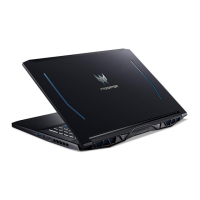
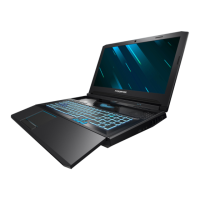

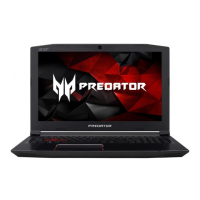
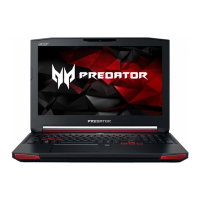
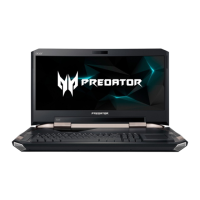

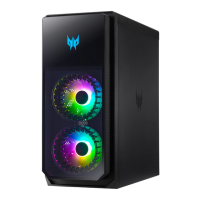
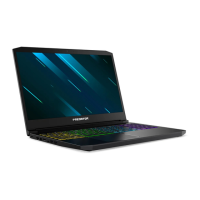
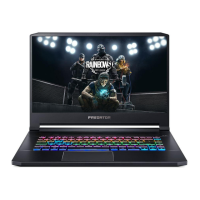
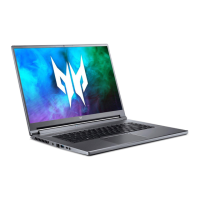
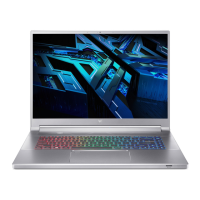
